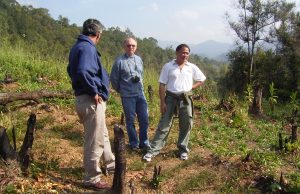
Collaboration is complex. It needs time and resources to establish and nurture.
When it works, it provides immeasurable satisfaction and goodwill between individuals, groups and organisations as well as achieve great things. When it doesn’t, …
Collaboration is made or broken through relationships – and good relations need good communication to flourish.
Collaborations should be entered into with care: they require a clear, considered mind to manage, particularly when prospective collaborators first meet.
As discussed in my earlier blogs about planning communication and selecting the ‘best’ communication media, these media play important roles in sending and receiving messages effectively.
Just as the right mix of media can propel a research story into the public sphere, this mix is an important consideration when establishing and maintaining a collaboration.
Organisational managers and project leaders can play important roles in selecting media used in collaborations. These media should be accessible to relevant collaborators, robust, and applicable to the needs of individuals and the group, as they are needed to help:
- Communicate between collaborators. This is not as easy as it seems, particularly when collaborators include people from various disciplines, levels or types of experience or education, languages, cultures, time zones and locations.
- Initiate and maintain relations. Before and during collaboration, professional and personal relations are formed between individuals and groups over time, which can further assist (or hinder) future communication.
- Share information, ideas, emotions. One primary aim of communication is the transfer of information, knowledge, concepts and emotions from one person to another – it comes with being a social species. This sharing can be within and outside of the collaborative group.
- Organise activities and events. As social beings, we also engage in events that bring us together to communicate face-to-face and virtually. Communication is required to organise meetings of all types, from the annual professional conference to the weekly management meeting.
- Demonstrate credibility. Spoken, non-verbal and textual communication can be vital for establishing and maintaining personal, professional and organisational credibility and branding. How we appear can be as important as what we say and write for some cultural and organisational hierarchies.
- Network. As social beings, we share our knowledge and experiences with people outside as well as inside our collaborations as we seek additional expertise and to inform, influence or even initiate change. Indeed, collaboration themselves are ‘micro’ networks with a web of relations and information flows.
- Negotiate and compromise. These aspects of communication are among the most complex, particularly when a collaboration is being established. Collaborations usually require nuanced, and at times highly diplomatic, communication to negotiate shared goals, processes and organisation to initiate and implement a project. This communication may require spoken and textual words and particularly non-verbal communication to accommodate communication needs between (at times disparate) groups.
When establishing collaborations – or even when simply working together – communication and the tools used are essential considerations for any communication plan as they are part of the ‘glue’ that form and maintain collaborative groups.
Yet how often is careful consideration given to a group’s communication needs, that is, for all individuals and organisations in the group, and the context in which they operate?
If organisational leaders and those that negotiate collaborations can emphasise the importance of communication for collaboration, I am sure greater collaborative impact is possible.
In future blogs, I will consider useful communication tools for online collaboration and how you might (or might not) use them.
To help you prepare for your next collaboration, contact The Comms Doctor® via email contact@thecommsdoctor.com.au or visit the Comms Doctor® website.
My considerations in collaboration started 40 years ago, culminating recently in my PhD with Charles Sturt University. Through studies with scientists from Australia and the Lao Peoples Democratic Republic in South East Asia, I developed an assessment tool to help select online communication tools to suit the characteristics, contexts and needs of collaborative groups that include scientists from both of these countries. Read more about the I-CHET tool I developed here.

